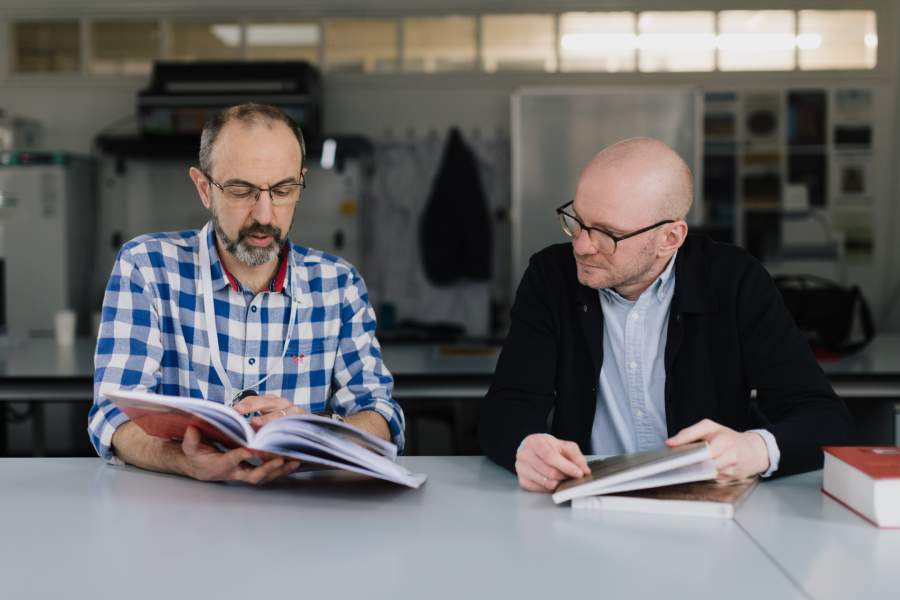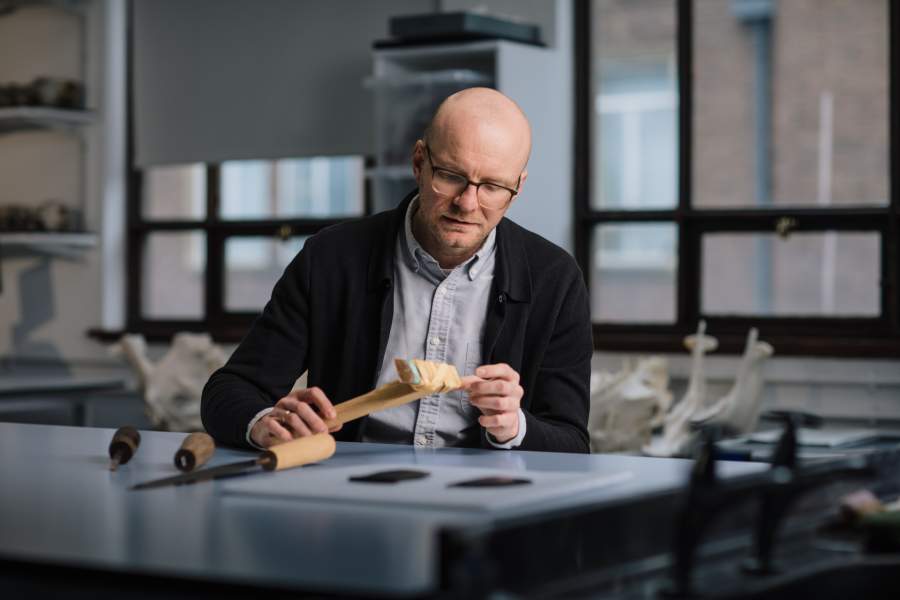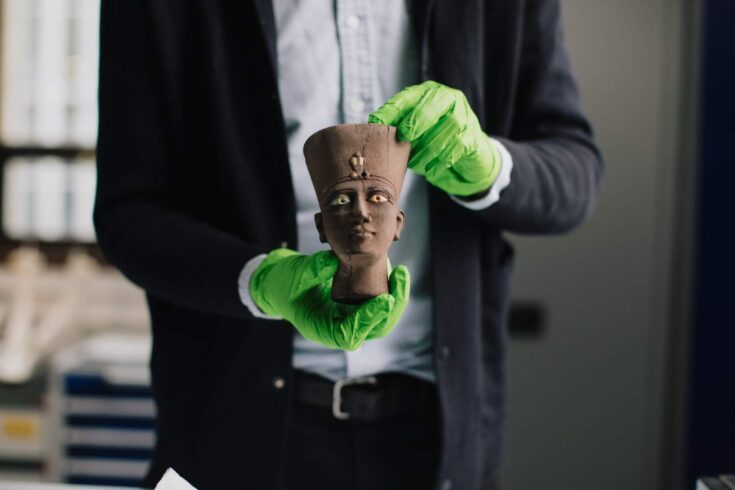“Mentoring a fellow begins right from the application stage”.
This was certainly true for Dr Martin Odler, postdoctoral fellow at Newcastle University’s School of History, Classics and Archaeology and Andrea Dolfini, Professor of Archaeology at Newcastle University.
About the project
EgypToolWear is a pioneering research project looking at how metal tools were used in late Chalcolithic and Bronze Age Egypt (approximately 3500 to 1070 BC).
It’s the first study to apply Metalwork Wear Analysis (MWA) to understand the practical use of copper-alloy tools in early Egyptian society, including:
- what crafts they were used for
- how they were handled
- what movements or gestures were involved in their operation
A multidisciplinary approach
Martin takes a multidisciplinary approach, combining both low and high-magnification MWA with:
- a critical reassessment of written records and visual representations, which are especially rich and detailed in the Egyptian context
- metallurgical analysis to understand the composition and production of the tools
- experimental archaeology to recreate and test tool use in practice
EgypToolWear studied a collection of around 150 copper-alloy tools from various periods, regions and functional types.
This wide sample allowed for a detailed, long-term view of tool use and change across ancient Egypt.

Professor Andrea Dolfini (left) and Dr Martin Odler (right). Credit: Newcastle University
A new look at ancient Egyptian metal tools
What makes this project especially significant is its innovative methodology.
Until now, scholars have relied on texts and images to interpret Egyptian tools.
EgypToolWear introduces a hands-on, scientific analysis that promises to challenge long-held assumptions, for example, the idea that Egyptian toolmaking was conservative and unchanging.
Missing knowledge
Professor Andrea Dolfini, said:
Here in Newcastle, we have world-class expertise in studying ancient metals from the period Martin was interested in but not when it comes to the region.
None of us, including myself, were specialists in ancient Egypt. That is what Martin brought with him when he came to Newcastle. He contributed to teaching, gave seminars, and really brought in that knowledge we were missing.
Future research
It is also the first large-scale use of MWA on Egyptian bronze tools.
By doing so, the project breathes new life into a traditionally conservative area of scholarship and opens the door to future research into ancient Egyptian metalwork.
Importantly, the project included plans for training and outreach, to ensure that this new line of research continues beyond the life of the project.
Achieving new skills
Through the project, Martin gained new analytical and interpretive skills that will advance his career.
In turn, he will bring specialist knowledge of predynastic and dynastic Egypt to Newcastle, enriching an institution where Egyptian archaeology is currently neither researched nor taught in depth.
Dr Martin Odler, said:
I originally started to research ancient Egyptian copper as an MA thesis, but quickly found out that a number of ‘textbook’ truths were unsupported.
It’s still a gift that keeps giving because there is quite a lot to be done in this field. Never before was the Egyptian metalwork wear studied in a systemic way, on a broadest possible corpus.
That is why I came to Newcastle to learn from Andrea Dolfini who is developing this research for Bronze Age Europe, learning the techniques from him to apply them on Bronze Age Egyptian metal work.
A major step in Egyptology

Dr Martin Odler. Credit: Newcastle University
EgypToolWear represents a major step forward in this field.
A database has gradually been built with hypotheses and interpretations to follow.
A significant collaboration with the Louvre Museum in France saw their powerful particle-induced X-ray emission machine being used.
This led to documentation and analyses of the tools from the Louvre collections which had never been analysed before.
Producing new knowledge
Significant new knowledge has also been generated through the systematic study of Egyptian and Nubian metalwork.
In particular, the research has revealed that these objects show meaningful use-wear patterns which can produce a significant body of new knowledge on early Egyptian and Nubian metalwork.
While the UK was in the process of associating with Horizon Europe, UK Research and Innovation supported successful Marie Skłodowska-Curie Actions applicants through the Horizon Europe guarantee.

